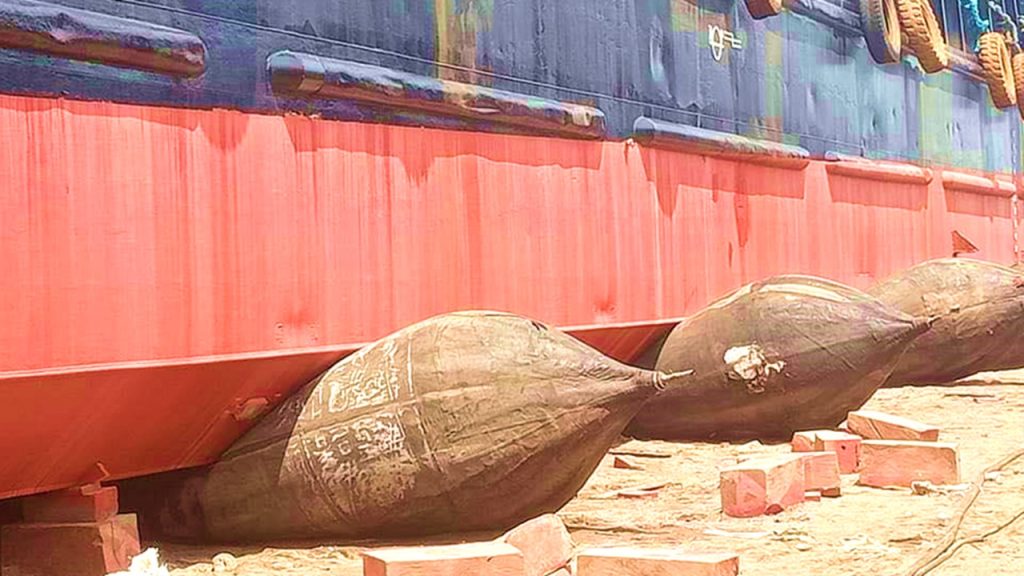In the vast and treacherous waters of the Philippines, seafarers face countless challenges as they navigate their vessels through unpredictable weather conditions and rough seas. The safety of these brave men and women rests on the effectiveness of their vessel safety equipment, which can mean the difference between life and death in critical situations. From life jackets to fire extinguishers, this article explores the essential ship safety equipment that every Filipino seafarer should have on board to ensure a secure voyage. Whether they are fishing for their livelihood or transporting goods across the archipelago, these vital pieces of equipment are indispensable allies that safeguard lives at sea.
Click here to view our fire and safety equipment supplies & services.
What is Vessel Safety Equipment?
Vessel safety equipment is a critical aspect of protecting Filipino seafarers from potential dangers at sea. These essential tools and devices are designed to ensure the well-being and survival of crew members in emergency situations. One such piece of equipment is a Personal Flotation Device (PFD), which individuals wear to provide buoyancy and keep them afloat in case they fall overboard. PFDs come in different types, including life jackets and inflatable vests, each with its own unique features.
Another important piece of vessel safety equipment is a fire extinguisher. Fires on board can quickly escalate and pose significant risks to both lives and property. Seafarers must be equipped with functional fire extinguishers that are suitable for the various classes of fires that may occur on vessels, such as Class A (fires involving solid materials) or Class B (fires involving flammable liquids). It is vital that these extinguishers are regularly inspected, maintained, and located strategically throughout the vessel for easy access in time-sensitive situations.
In addition to PFDs and fire extinguishers, other essential vessel safety equipment includes life rafts, distress flares or signals, marine radios or emergency communication devices, first aid kits, navigation lights, radar reflectors, and bilge pumps. Each of these tools serves a specific purpose in ensuring the safe operation of a vessel at all times.

Importance of Vessel Safety Equipment for Seafarers
Vessel safety equipment is of utmost importance for Pinoy seafarers, as it plays a crucial role in ensuring their safety and well-being while at sea. Filipino seafarers, who are known for their exceptional skills and dedication to the maritime industry, must be equipped with the essential safety gear to navigate through unpredictable waters.
One of the most vital pieces of vessel safety equipment is a life jacket. Seafarers need to have access to properly fitting life jackets at all times while on board. In emergency situations such as shipwrecks or man-overboard incidents, these simple yet effective devices can mean the difference between life and death. It is important for seafarers to not only wear them when required but also become proficient in using them efficiently.
Another crucial piece of boat safety equipment in the Philippines is a personal locator beacon (PLB). This small device sends out distress signals that can help rescuers locate individuals in case they go missing or become stranded at sea. PLBs are lightweight and can be easily carried by seafarers during their duties on deck or in lifeboats. Investing in quality PLBs ensures that Filipino seafarers have an added layer of protection and remain connected to potentially lifesaving resources even in remote areas.
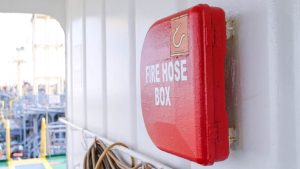
Here are the 6 essential vessel safety equipment:
1. Personal Protective Equipment (PPE)
Safety helmets, gloves, goggles, and life jackets are the cornerstone of Personal Protective Equipment (PPE) for Filipino seafarers. While their importance cannot be emphasized enough, it is essential to go beyond their mandatory usage and truly understand how they can enhance safety at sea.
Safety Helmet: Essential Vessel Safety Equipment
The safety helmet is an indispensable piece of equipment for Filipino seafarers. It serves as a protective barrier against potential head injuries that can occur onboard vessels. While some may argue that wearing a safety helmet is uncomfortable or unnecessary, the reality is that accidents happen unexpectedly, and it is better to be prepared. The maritime industry is full of risks and hazards, from heavy machinery to unstable conditions at sea. In such environments, a safety helmet can be the difference between life and death.
One often overlooked benefit of wearing a safety helmet is its role in preventing long-term health consequences. Head injuries can lead to severe concussions or even traumatic brain injuries, which can have lifelong effects on an individual’s physical and mental well-being. A safety helmet acts as a safeguard against these potential dangers by cushioning the impact during falls or accidents onboard vessels.
Moreover, the presence of safety helmets creates a culture of safety awareness among seafarers. When everyone onboard wears a helmet, it sends a clear message that their protection matters and encourages others to prioritize their own safety as well. This collective consciousness not only reduces the likelihood of accidents but also creates an atmosphere where seafarers look out for one another’s well-being.
The importance of wearing a safety helmet cannot be overstated for Filipino seafarers. It not only protects them from immediate head injuries but also prevents long-term health complications due to accidents at sea.
Gloves: Essential Vessel Safety Equipment
Gloves are often overlooked when it comes to vessel safety equipment in the Philippines, but they play a crucial role in protecting Filipino seafarers from various hazards at sea. One of the main dangers aboard a vessel is the risk of sustaining hand injuries while handling heavy equipment or performing maintenance tasks. Gloves provide an essential barrier between seafarers’ hands and these potential dangers, reducing the chances of cuts, abrasions, burns, or chemical exposures.
In addition to physical protection, gloves also offer improved grip and dexterity, allowing seafarers to handle tools and equipment with precision and control. This is particularly important in hazardous environments where even a slight misstep can have disastrous consequences. Furthermore, some gloves feature insulation properties that protect against extreme temperatures or electric shocks – vital for those working in engine rooms or around electrical systems on board a vessel.
Investing in high-quality gloves is not just about complying with regulations; it’s about ensuring the safety and well-being of Filipino seafarers. By providing adequate protection against hand injuries and enhancing their capabilities on board, gloves become an essential piece of boat safety equipment for any seafarer working at sea. So next time you step foot on a vessel, remember to put on your gloves – they might save your hands (and potentially your life) during those long days out at sea.
Goggles: Essential Vessel Safety Equipment
Goggles are often overlooked when it comes to vessel safety equipment in the Philippines, but they are a crucial tool that all Filipino seafarers should have on board. Not only do they protect the eyes from harmful debris and UV rays, but they also enhance vision in challenging maritime environments. Whether it’s navigating through foggy conditions or dealing with intense sunlight reflecting off the water, goggles can greatly improve visibility and reduce the risk of accidents.
One significant benefit of wearing goggles is their ability to shield the eyes from chemical splashes and hazardous materials commonly found on vessels. Many seafarers work in areas where there is a high chance of exposure to harmful substances, such as oil spills or chemicals used for cleaning and maintenance. Wearing goggles provides an added layer of protection for the eyes, preventing potential long-term damage that could compromise overall eye health.
Another advantage of incorporating goggles into vessel safety equipment is their contribution to fatigue reduction. When exposed to bright lights or extreme weather conditions for extended periods, seafarers may experience eye strain and fatigue. This can impair concentration levels and reaction times, increasing the risk of accidents. By wearing goggles designed specifically for maritime use – with features like anti-glare coatings – seafarers can minimize eye strain and maintain optimal performance even during demanding tasks.
Goggles are an essential piece of vessel safety equipment that every Filipino seafarer should have within reach.
Life Jacket: Essential Vessel Safety Equipment
The life jacket is an essential piece of ship safety equipment for every Filipino sailor and seafarer. It serves as a literal lifesaver, providing buoyancy and keeping the wearer afloat in case of an emergency or accident at sea. However, it is important to note that not all life jackets are created equal. Different types of life jackets offer varying levels of buoyancy and safety features, so it’s crucial to choose one that is suitable for the specific conditions you may encounter on the water.
In recent years, there have been tremendous advancements in life jacket technology, making them more comfortable and effective than ever before. From inflatable life jackets that are lightweight and easy to wear to those equipped with built-in GPS devices for quick detection and rescue in remote areas, these innovations enhance the chances of survival for seafarers in distress. Moreover, modern life jackets also come with additional features such as whistles or lights for better visibility during emergencies at night or low visibility conditions.
It cannot be emphasized enough how important it is to wear a properly fitting and functioning life jacket whenever sailing or working on vessels in the Philippine Sea. Every seafarer should familiarize themselves with their particular type of life jacket and know how to don and secure it in case of an emergency properly. Failure to do so may result in tragic consequences, as accidents can happen unexpectedly, even to the most seasoned sailors.
Overall, personal protective equipment such as safety helmets, gloves, goggles, and life jackets serve as essential tools to ensure the well-being of Filipino seafarers. By understanding their purpose beyond compliance requirements and actively utilizing them onboard vessels, seafarers can significantly reduce risks associated with accidents and promote a culture of safety on board ships. Remember: PPE is not just about fulfilling regulatory obligations but should be seen as an investment in personal safety that safeguards lives at sea.
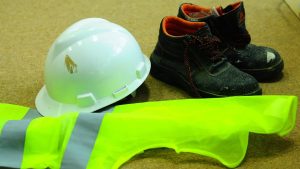
2. Fire Safety Equipment
Fire safety equipment is a critical component of vessel safety for Filipino seafarers.
Fire Extinguishers: Essential Vessel Safety Equipment
Fire extinguishers are an essential piece of ship safety equipment that all seafarers should familiarize themselves with. These devices can be the difference between life and death in case of a fire outbreak on board a vessel. However, it’s not enough to simply have fire extinguishers on board; seafarers must also know how to use them properly.
One key aspect of using fire extinguishers in the Philippines effectively is understanding the different types available. There are four main types: water-based, foam, carbon dioxide (CO2), and dry chemical powder. Each type is designed for specific classes of fires, such as Class A (ordinary combustible materials like wood or paper), Class B (flammable liquids like oil or gasoline), and Class C (electrical fires).
Another crucial aspect often overlooked is regular maintenance and inspection of fire extinguishers. Seafarers should be trained to check these devices regularly for any signs of damage or expiry dates. This ensures that if a fire were to occur, the extinguisher would be in good working condition and ready for immediate use.
While having fire extinguishers on board vessels is required by Philippine maritime regulations, it’s equally important for seafarers to understand their different types and know how to use them effectively. Regular inspection and maintenance also play a significant role in ensuring their reliability during emergencies.
Fire Alarms: Essential Vessel Safety Equipment
Fire alarms are undoubtedly one of the most essential pieces of boat safety equipment on board any vessel in the Philippines. These devices play a critical role in detecting and alerting crew members to the presence of fire, giving them crucial time to respond and mitigate potential danger. What sets fire alarms apart from other vessel safety equipment is their ability to act as an early warning system, allowing crew members to initiate emergency procedures swiftly. This quick response can mean the difference between a small incident and a full-blown disaster.
Furthermore, advances in technology have made fire alarms more sophisticated than ever before. Modern fire alarm systems now incorporate features such as heat detectors, smoke detectors, and manual call points that can be activated when necessary. With these advancements, not only are fires detected at their earliest stages, but false alarms are significantly reduced, preventing unnecessary panic among crew members. The integration of these sensors into a centralized monitoring system allows for seamless communication between different areas of the vessel, ensuring everyone is alerted promptly and effectively.
Fire alarms are undoubtedly paramount in ensuring the safety of Filipino seafarers on board vessels. With their ability to detect fires at their early stages and provide timely alerts to crew members throughout the ship via advanced technology systems, they play a vital role in preventing disasters at sea. Investing in high-quality fire alarm systems should always be a top priority for vessel owners and operators who value the well-being of their crews and seek to minimize potential risks on board.
Fire Blankets: Essential Vessel Safety Equipment
Fire blankets are an essential piece of boat safety equipment that every Filipino seafarer should have on board. While fire extinguishers are important for putting out fires, fire blankets provide an additional layer of protection by smothering the flames. These specially made blankets are designed to resist fire and can be used to cover small fires or wrap around a person in case their clothing catches fire.
One of the key advantages of using fire blankets in the Philippines is their versatility. Unlike fire extinguishers, which may require training to use properly, anyone can easily use a fire blanket without any special knowledge or skills. This makes them ideal for emergency situations where time is crucial, and there may not be enough time to read instructions or figure out how to operate a specific type of extinguisher.
Moreover, another benefit of having fire blankets on board is that they do not leave behind any residue after use, unlike traditional extinguishers that can leave chemicals and foam throughout the area. This means that clean-up after using a fire blanket is minimal, allowing for quicker recovery and minimizing potential damage caused by other firefighting methods.
By investing in reliable fire blankets as part of vessel safety equipment, Filipino seafarers can ensure they are well-prepared to handle any small fires that may occur on board. These versatile tools provide an added layer of safety and peace of mind when navigating unpredictable waters. Moreover, with their user-friendly design and easy cleanup process, they truly are an essential choice for any vessel’s safety arsenal.
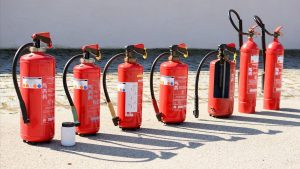
3. Emergency Communication Devices
When it comes to emergency communication devices, VHF radios, and distress signals play a crucial role in keeping Filipino seafarers safe at sea. VHF radios are the go-to tool for ship-to-ship and ship-to-shore communication due to their reliability and wide coverage range. These radios operate on high-frequency bands, enabling clear and instant communication, even in rough weather conditions or remote areas.
One of the key features that make VHF radios in the Philippines indispensable is their ability to tune in to specific channels designated for distress signals. In cases of emergencies or urgent situations at sea, seafarers can transmit Mayday calls through these channels, which are monitored by search and rescue authorities. This allows for immediate response and assistance from nearby vessels or coast guard units.
However, it’s important to note that simply having access to VHF radios is not enough; seafarers must also be knowledgeable about proper usage protocols and distress signal codes. Training programs should include instruction on how to properly use these devices during emergencies, as well as how to accurately transmit distress signals using standardized code phrases such as Mayday or Pan-Pan. Ensuring that Filipino seafarers have the necessary skills not only maximizes the effectiveness of these emergency communication devices but also greatly enhances overall vessel safety.
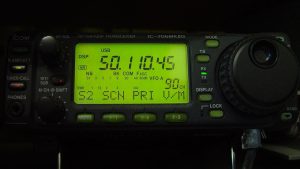
4. Navigation Equipment
In the world of Philippine seafaring, having reliable navigation equipment is crucial for the safety and success of every voyage. Among the essential tools that Filipino seafarers must be well-versed in are GPS, radar, compasses, and navigational charts. These instruments work together seamlessly to provide accurate positioning information, detect potential obstacles or dangers ahead, and aid in charting a safe course.
GPS: Essential Vessel Safety Equipment
One of the most crucial pieces of boat safety equipment on any vessel is the Global Positioning System (GPS). This device not only provides accurate navigation data but it also plays a significant role in enhancing maritime safety. With GPS, Filipino seafarers can determine their precise location at any given time, ensuring they stay on course and avoid potential hazards.
But GPS technology has evolved beyond its primary purpose of navigation. Nowadays, modern GPS units offer additional features that further enhance vessel safety. For instance, some devices can provide real-time weather updates, enabling seafarers to anticipate storms or other dangerous conditions ahead. Additionally, GPS systems equipped with distress signal capabilities can alert authorities in case of an emergency, providing vital information about a vessel’s exact location for quick rescue operations.
Equipping vessels with a reliable GPS system is essential for every Filipino seafarer’s safety at sea. By providing accurate navigation data and additional safety features like real-time weather updates and emergency distress signals, GPS technology plays a critical role in preventing accidents and saving lives on board ships. Investing in high-quality GPS equipment ensures that Filipino seafarers are equipped with the tools they need to navigate safely through any voyage.
Radar: Essential Vessel Safety Equipment
One of the most crucial pieces of equipment for Philippine vessel safety is the radar. A radar system uses radio waves to detect and track objects, providing invaluable information about nearby vessels, land masses, and potential dangers. For Filipino seafarers navigating the vast ocean waters, having a reliable radar system on board can mean the difference between a smooth journey and a catastrophe.
Beyond simply detecting other ships in proximity, modern radar systems also offer advanced features like collision avoidance alerts and weather tracking capabilities. These additional functionalities allow seafarers to stay informed about their surroundings and make well-informed decisions to ensure the safety of their crew and cargo. With changing weather patterns becoming increasingly unpredictable, having a radar system that can track storms or heavy precipitation is more important than ever.
Investing in high-quality radar equipment should be a priority for every Filipino seafarer. While it may seem expensive initially, the cost pales in comparison to the potential risks that come with sailing blindly without proper navigation aid. From detecting hazards hidden beyond the horizon to ensuring safe passage through crowded shipping lanes, radar remains an essential tool that enhances vessel safety in multiple ways.
Compasses: Essential Vessel Safety Equipment
Compasses are often overlooked when it comes to vessel safety equipment, but they play a critical role in Philippine navigation. In the event of an electrical failure or malfunction, a compass becomes your crucial guide amidst the vast expanse of the open sea. It is your reliable companion that will never let you down.
But compasses do more than help you navigate; they also offer a sense of security and peace of mind. Knowing that you have a trusty device to rely on can alleviate stress and anxiety during long voyages. In addition, compasses allow for accurate course-plotting and course corrections, ensuring that you stay on track and reach your destination safely.
Investing in a high-quality compass is essential for every Filipino seafarer. With advances in technology, there are now innovative compass options available on the market with additional features like backlighting and global needle balance for improved accuracy no matter where you are in the world. So before embarking on your next voyage, make sure to equip yourself with this essential vessel safety equipment and make navigating the seas an easier and safer journey.
Navigational Charts: Essential Vessel Safety Equipment
Navigational charts are an indispensable tool for ensuring the safety of vessels at sea. These maps provide vital information about water depths, maritime hazards, coastal features, and aids to navigation. They help Pinoy seafarers to navigate safely through unfamiliar waters and avoid potential dangers such as submerged rocks or shifting sandbars.
What sets navigational charts apart from conventional road maps is their level of detail. Maritime cartographers meticulously gather data and use advanced technology to produce accurate and up-to-date nautical charts. This information is critical for maintaining safe navigation even in challenging conditions like heavy fog or storms.
Despite technological advancements like electronic navigation systems, traditional paper charts remain the primary vessel safety equipment on board ships in the Philippines. It serves as a reliable backup in case of system failure or emergencies. Additionally, some areas may have incomplete or outdated electronic chart coverage, making it necessary to rely on paper charts as the main source of guidance.
Navigational charts are essential vessel safety equipment for Filipino seafarers. They play a crucial role in ensuring safe passage by providing accurate information on water depths, hazards, and aids to navigation. Whether in printed form or digital format, these detailed maps serve as a vital reference for mariners when navigating through unfamiliar waters or when faced with unforeseen circumstances requiring immediate action. Seafarers must be knowledgeable about using navigational charts effectively and prioritize their maintenance and updates to ensure smooth sailing throughout their voyage.

5. First Aid Kits and Medical Equipment
First aid kits and medical equipment are indispensable in ensuring the safety and well-being of Filipino seafarers. Bandages, for instance, play a crucial role in preventing further injury and controlling bleeding. However, it is important to note that not all bandages are created equal. Seafarers should have access to a variety of bandage types, such as adhesive strips, conforming bandages, and triangular bandages, to cater to different wound sizes and shapes.
In addition to bandages, antiseptics are essential for preventing infection in maritime emergencies. Iodine-based antiseptics like povidone-iodine solution can effectively kill bacteria on contact without causing irritation to the skin or respiratory system. Furthermore, medications such as pain relievers and anti-inflammatory drugs should be readily available within first aid kits to alleviate any discomfort or pain experienced by seafarers during medical emergencies.
Defibrillators also form an integral part of vessel safety equipment as they can save lives in cases of cardiac arrest. These devices deliver electric shocks to the heart in order to restore normal rhythm. It is imperative that Filipino seafarers receive proper training on how to use a defibrillator since prompt action during cardiac events significantly increases the chances of survival.
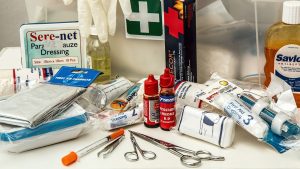
6. Life-Saving Equipment
When it comes to essential vessel safety equipment, there are a few key pieces of equipment that can mean the difference between life and death for Filipino seafarers. One of the most important pieces of equipment is a personal flotation device (PFD). These devices are designed to keep individuals afloat in the water and can be critical in emergency situations where quick action is necessary.
Another essential piece of vessel safety equipment is a life raft. In the event that a vessel sinks or becomes disabled, having a reliable life raft can potentially save lives by providing shelter and transportation for those onboard. Life rafts are often equipped with survival kits containing food, water, and signaling devices to help rescuers locate those in need.
No matter how experienced or skilled Filipino seafarers may be, accidents at sea can occur when least expected. Investing in these essential vessel safety equipment not only demonstrates compliance with maritime regulations but also ensures that seafarers have the best chance of survival in emergency situations. By prioritizing safety on board vessels, Filipino seafarers can protect themselves and improve their chances of returning home safely to their loved ones.

Are You Looking for Vessel Safety Equipment in the Philippines?
When it comes to vessel safety, Filipino seafarers understand the importance of having reliable and effective equipment onboard. Amaya Dockyard & Marine Services Inc. (ADMSI) is a leading supplies and services company that provides quality and cost-effective boat safety equipment in the Philippines. They offer a wide range of fire and vessel safety equipment, such as fire alarms, sprinklers, life jackets, life rafts, fire extinguishers, and emergency flares.
- Email us: info@amayadockyard.com
- Call our 24-hour hotline: +63 917 633 0479
- Viber: +63 917 633 0479
- WhatsApp: +63 917 633 0479
- Facebook Messenger: Click here
- Click here to inquire
One aspect that sets Amaya Dockyard apart from other suppliers is its commitment to quality. Each safety product undergoes rigorous testing to ensure it meets international standards and regulations. This gives seafarers peace of mind knowing that they have reliable equipment that can withstand even the harshest conditions at sea.
Moreover, Amaya Dockyard takes pride in providing cost-effective solutions without compromising on quality. They understand the financial constraints faced by many ship owners and strive to offer competitive prices without sacrificing safety standards. By partnering with them for your vessel’s safety needs, you can be assured of getting value for your money.
Amaya Dockyard & Marine Services Inc. in Tanza, Cavite, is the go-to fire and vessel safety equipment supplies and services for vessels in the Philippines. With their commitment to quality and cost-effectiveness, they provide top-notch products that meet international standards while being affordable for Filipino ship owners. Whether you are equipping a large cargo vessel or a small fishing boat, they have the necessary equipment to keep you safe at sea.
Final Thoughts: Essential Vessel Safety Equipment for Filipino Seafarers
In conclusion, it is crucial for Filipino seafarers to prioritize their safety by equipping themselves with essential vessel safety equipment. These tools not only ensure their personal well-being but also contribute to the overall safety of the entire crew and vessel. By investing in high-quality life jackets, personal locator beacons, and emergency escape breathing devices, Filipino seafarers can mitigate risks and improve their chances of survival in any emergency situation.
Moreover, it is important to highlight the role of regular training and drills in using these vessel safety equipment effectively. Simply having them onboard is not enough; seafarers must be well-versed in how to operate each item during emergency situations. Incorporating regular simulation exercises and training programs will help instill a sense of preparedness and confidence among seafarers, ensuring they know exactly how to respond quickly and efficiently when faced with a crisis at sea.
Lastly, as technology advances rapidly, it is vital that Filipino seafarers stay updated on the latest innovations in vessel safety equipment. Companies should invest in state-of-the-art technology like automatic fire suppression systems or remote-controlled rescue boats that can significantly enhance onboard safety measures. By staying ahead of the curve and adapting to new developments in maritime security systems, Filipino seafarers can maintain high standards of safety while navigating through challenging seas around the world.

